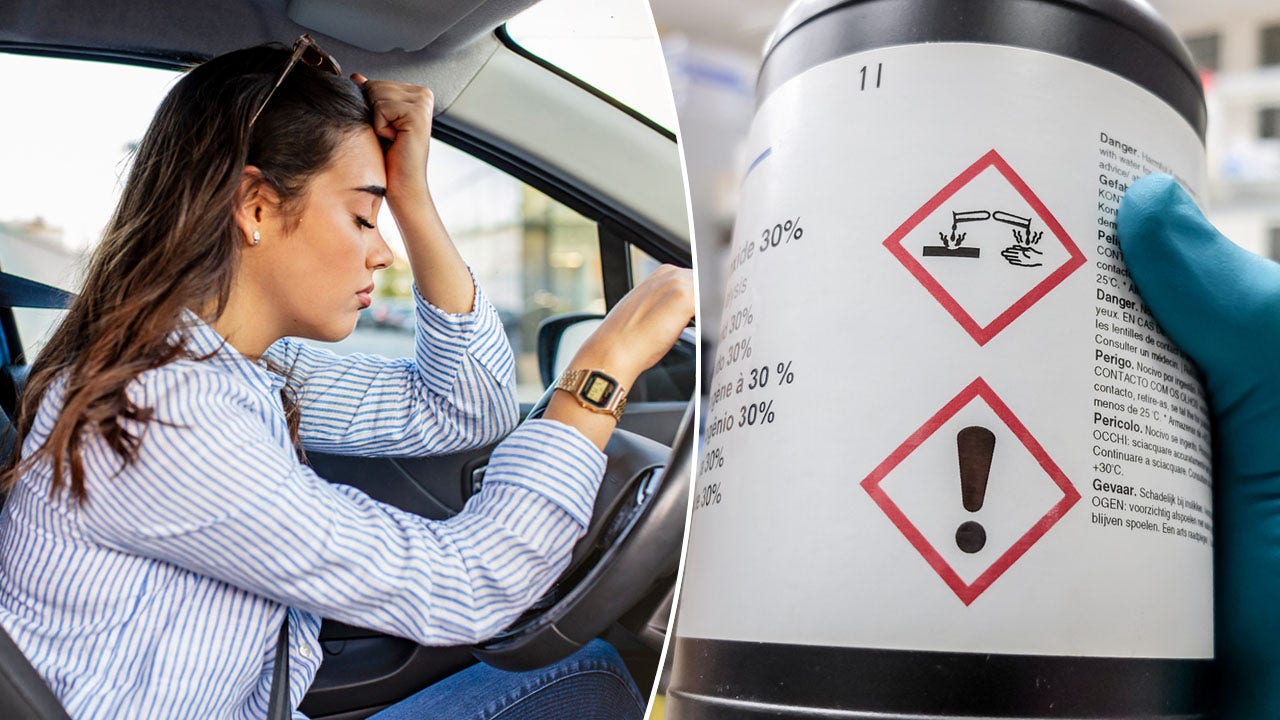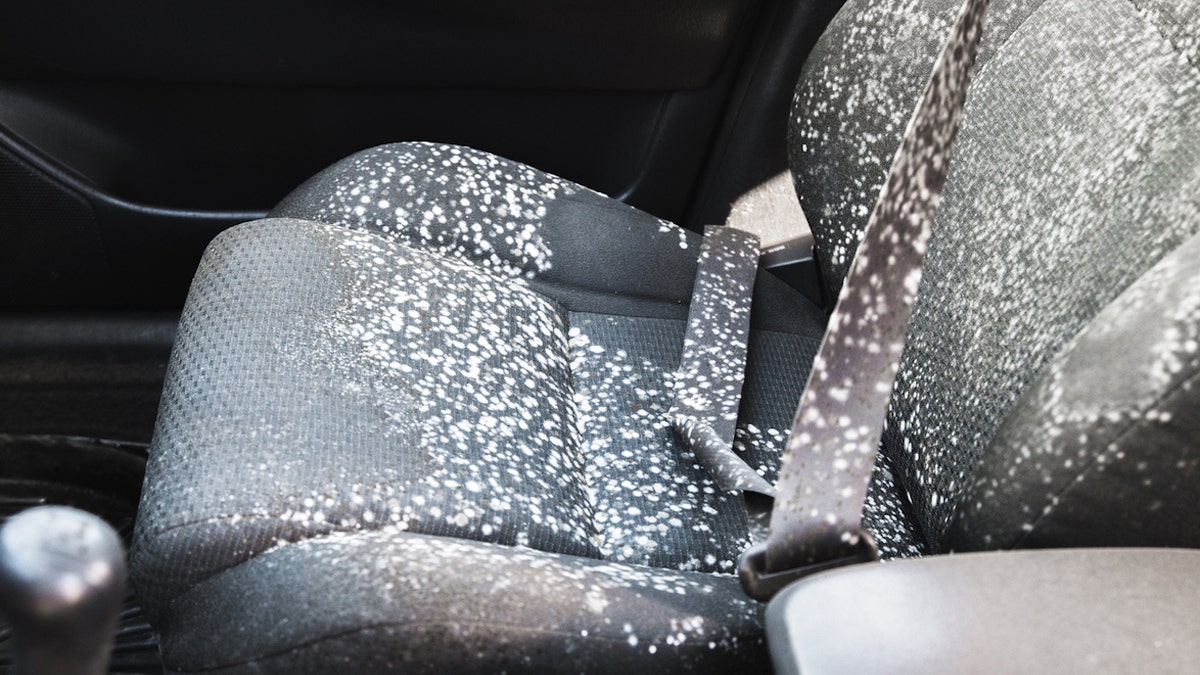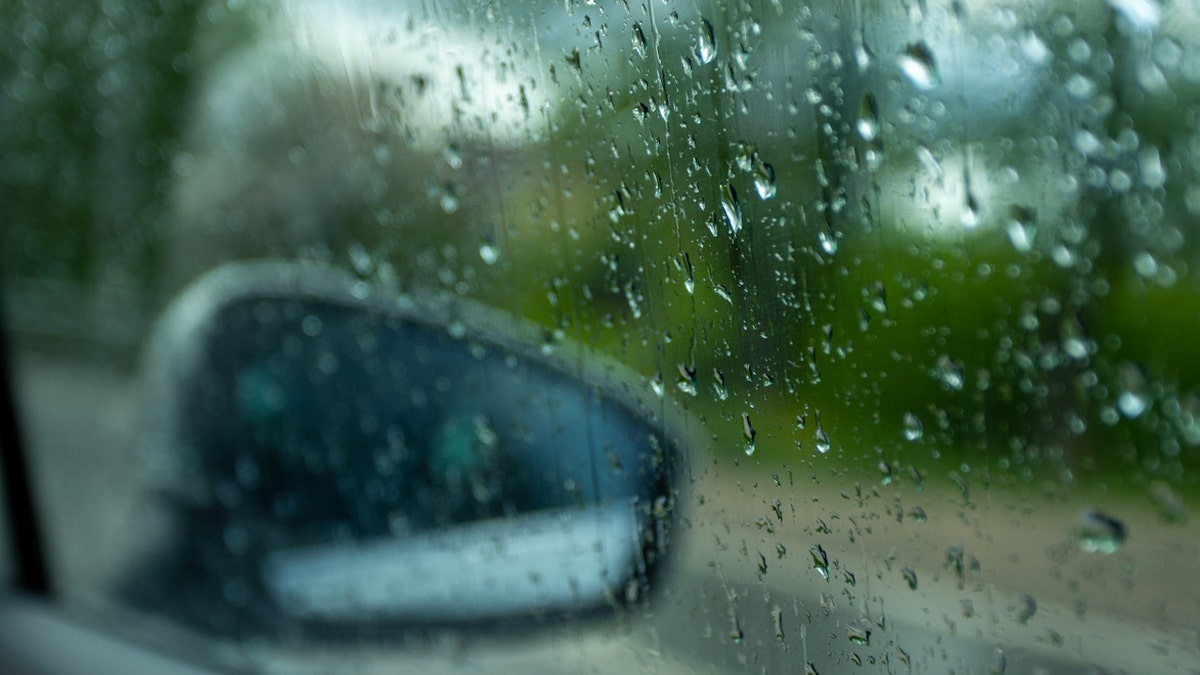Health
Tina Turner suffered from kidney disease before her death: ‘I have put myself in great danger’

Following Tina Turner’s death on May 24 at age 83, it was reported that the legendary singer had died of natural causes.
The “Queen of Rock ‘n’ Roll” had struggled with several health issues, however, including long-term kidney disease.
As recently as March 9, on World Kidney Day, Turner announced her support of an international campaign for kidney health via Instagram.
Turner shared in the post how her failure to seek treatment had harmed her health and endangered her life.
TINA TURNER MOURNED BY HOLLYWOOD AFTER ICON’S DEATH AT 83: ‘SIMPLY THE BEST’
“My kidneys are victims of my not realizing that my high blood pressure should have been treated with conventional medicine,” the singer wrote on Instagram.
“I have put myself in great danger by refusing to face the reality that I need daily, lifelong therapy with medication. For far too long, I believed that my body was an untouchable and indestructible bastion.”
“I have put myself in great danger by refusing to face the reality that I need daily, lifelong therapy with medication,” Tina Turner wrote in March 2023. (Getty Images)
Turner’s battle with kidney issues began in 1978, when she was diagnosed with hypertension.
Not realizing the danger that her high blood pressure posed, she never made much of an effort to control it, as she wrote in a story posted on ShowYourKidneysLove.com, a kidney awareness website.
“In 1985, a doctor gave me a prescription for pills, of which I was supposed to take one a day, and that was it,” she wrote. “I didn’t give it any more thought.”
“I have put myself in great danger by refusing to face the reality that I need daily, lifelong therapy with medication.”
It wasn’t until 2009, when the “poorly controlled hypertension” caused the singer to suffer a stroke, that Turner started to understand the function and purpose of the kidneys.
“This is when I first learned that my kidneys didn’t work that well anymore,” Turner wrote. “They had already lost 35% of their function.”
The singer continued taking blood pressure medication, but she believed it only made her feel worse.
FRIENDS SHORTEN KIDNEY PATIENTS’ LONG WAITS FOR TRANSPLANTS TO MERE MONTHS BY DONATING ORGANS
“With time, I developed a fatal dislike of these pills,” she wrote. “I remembered relishing life before I started taking them and wished I could be as clear-headed and energetic as I used to be.”
Eventually, Turner gave up the conventional medication in favor of homeopathic medicine — a decision that ultimately put her life in danger.

Turner’s battle with kidney issues began in 1978, when she was diagnosed with hypertension that went uncontrolled for a long time. (Getty Images)
“I had not known that uncontrolled hypertension would worsen my renal disease and that I would kill my kidneys by giving up on controlling my blood pressure,” Turner wrote in the online story. “I never would have replaced my medication (with) the homeopathic alternatives if I had an idea how much was at stake for me.”
“Thanks to my naivety, I had ended up at the point where it was about life or death,” she wrote.
By this time, Turner was suffering from signs of late-stage kidney disease, including fatigue, nausea and irritability.
HOW TINA TURNER FINALLY FOUND HAPPINESS
“The doctors made it very clear that the consequences of my decision were irreversible,” the singer wrote. “My kidney function had reached its all-time low.”
“I realized that the struggle for healing is always also a struggle for accurate information.”
Turner’s only option was to start dialysis, which is a treatment that removes excess fluid and waste from the blood when the kidneys cannot function properly.
“I realized that the struggle for healing is always also a struggle for accurate information,” the singer wrote. “For example, I had not been aware that chronic kidney failure is called a ‘silent killer’ because symptoms do not become noticeable until 80% of renal tissue is lost.”

In 2017, Turner received a life-saving kidney transplant from her husband, Erwin Bach (pictured). (Getty Images)
In 2017, Turner received a life-saving kidney transplant from her husband, Erwin Bach, who she’d married in 2013 after they’d been together for 27 years — but the months after the surgery were riddled with challenges.
“From time to time, my body tried to reject the donor kidney, as it frequently happens after a transplantation,” the singer explained. “Every so often, this required more hospital admissions.”
“The doctors made it very clear that the consequences of my decision were irreversible.”
Turner continued to suffer from nausea, dizziness and memory loss.
“I am on multiple prescriptions and take great care to follow my doctors’ orders meticulously, for I know that I can trust them and their therapies,” she wrote.
TEEN DENIED KIDNEY TRANSPLANT BECAUSE SHE’S NOT VACCINATED FOR COVID, SAY PARENTS
Just two months after the Instagram post announcing her support of kidney health awareness and sharing her own story, Turner died in her Switzerland home.
What to know about kidney disease
Healthy kidneys have three key jobs, per the National Kidney Foundation (NKF). They remove waste products and excess fluid from the body, help to control blood pressure and play a role in producing red blood cells.
Kidney failure, also known as renal failure, occurs when 85-90% of the organs’ function is gone and they can no longer work on their own. This causes extra fluid and toxic waste to build up in the body, which can cause life-threatening conditions.
The two primary causes are high blood pressure, as was the case for Turner, and diabetes. Certain diseases, injuries and inherited disorders can also result in kidney damage.

Dialysis is a treatment that removes excess fluid and waste from the blood when the kidneys cannot function properly. (iStock)
In most cases, people don’t experience symptoms until they are already in renal failure.
Those include loss of appetite, fatigue, sleep problems, anemia, weakness, unexplained weight loss, itching, muscle cramps and swelling of the feet or ankles.
People in renal failure require continuous treatment to stay alive.
CLICK HERE TO SIGN UP FOR OUR HEALTH NEWSLETTER
The two options for treatment are dialysis and a kidney transplant.
“The dialysis treatments or transplanted kidneys will take over some of the work of your damaged kidneys and remove wastes and extra fluid from your body,” NKF states on its website. “This will make many of your symptoms better.”
Other treatments may include medications, dietary restrictions, regular exercise and restriction of salt intake.
More than one in seven, or 15% of U.S. adults, have chronic kidney disease, according to the Centers for Disease Control and Prevention (CDC).
As many as nine in 10 adults with chronic kidney disease are not aware that they have it.
People 65 years of age and older are at higher risk of the disease, making up 38% of the cases, compared to 12% of those aged 45 to 64 and just 6% of those aged 18 to 44.

Health
Introducing Our Product Reviews Team, and How We Review | Woman's World

Sign Up
Create a free account to access exclusive content, play games, solve puzzles, test your pop-culture knowledge and receive special offers.
Already have an account? Login
Forgot your password?
Get back to the Sign In
Use left and right arrow keys to navigate between menu items.
Use escape to exit the menu.
Health
What You Should Know About the Military Diet: Experts Weigh In | Woman's World

Sign Up
Create a free account to access exclusive content, play games, solve puzzles, test your pop-culture knowledge and receive special offers.
Already have an account? Login
Forgot your password?
Get back to the Sign In
Use left and right arrow keys to navigate between menu items.
Use escape to exit the menu.
Health
Could your car make you sick? Study highlights potentially cancerous toxins in vehicles

Americans may be breathing in cancer-causing chemicals while driving, recent research suggests.
A study published in the journal Environmental Science & Technology has sparked discussions about the potentially harmful toxins that could be lurking in the cabins of vehicles.
“Certainly the indoor air quality can cause health symptoms,” Dr. Ken Speath, M.D., the division chief and medical director for occupational and environmental medicine at Northwell Health on Long Island, New York, told Fox News Digital.
‘FOREVER CHEMICALS’ FOUND IN US DRINKING WATER, MAP SHOWS ‘HOT SPOTS’ OF HIGHEST LEVELS
It is important to be mindful of what you’re breathing in at home, at the office, at school and even in cars, according to Speath, who was not involved in the study.
“There can be situations where levels of harmful chemicals get high enough to potentially cause health harms,” he said.
Americans may be breathing in cancer-causing chemicals while they are driving, recent research suggests. A study published in the journal Environmental Science & Technology has sparked many discussions. (iStock)
“A car is a closed small space — so whatever is in the air is certainly going to be breathed in.”
Research reveals ‘harmful chemicals’
The peer-reviewed study looked at 101 owned vehicles in the U.S., model year 2015 or newer.
The researchers concluded that harmful flame-retardant chemicals — including those suspected of potentially causing cancer and some neurological issues — may be polluting the air inside vehicles.
DRIVING DANGERS: 9 TOP DISTRACTIONS THAT CONTRIBUTE TO ACCIDENTS, ACCORDING TO EXPERTS
“Flame retardant chemicals, which are intentionally added to vehicle interiors to meet flammability standards, are released into the cabin air from the materials to which they were applied,” lead author Rebecca Hoehn, a scientist at Duke University, told Fox News Digital.
“People in these vehicles may be exposed to these chemicals.”
Seat foam was the only material the researchers measured, Hoehn said, but other interior materials could also contain the chemicals.

The researchers concluded that harmful flame-retardant chemicals — including those suspected of potentially causing cancer and some neurological issues — may be polluting the air inside vehicles. (iStock)
“Considering the average driver spends about an hour in the car every day, this is a significant public health issue,” Hoehn warned.
“It’s particularly concerning for drivers with longer commutes, as well as child passengers, who breathe more air pound for pound than adults.”
The chemicals detected in the car cabins included a flame retardant called tris (1-chloro-isopropyl) phosphate (TCIPP), which is currently being investigated as a potential carcinogen by the U.S. National Toxicology Program.
“Considering the average driver spends about an hour in the car every day, this is a significant public health issue.”
Other flame retardants — tris (1, 3-dichloro-2-propyl) phosphate (TDCIPP) and tris (2-chloroethyl) phosphate (TCEP) — were also detected.
These are “two Californian Proposition 65 carcinogens linked to neurological and reproductive harms,” according to a press release.
Higher concentrations of the flame retardants were found during warmer weather.
“We found that the same cars, sampled in both winter and summer, had higher concentrations of flame retardants in the cabin air during the warm summer months,” Hoehn told Fox News Digital.

Flame retardants are added to vehicles to meet the National Highway Traffic Safety Administration Federal Motor Vehicle Safety Standard, which mandated their use in the 1970s. (iStock)
Flame retardants are added to vehicles to meet the National Highway Traffic Safety Administration Federal Motor Vehicle Safety Standard (FMVSS 302), which mandated their use in the 1970s, the release stated.
Flame retardants have been the “focus of concern for some time,” Speath told Fox News Digital.
More information is needed to determine the health risks these chemicals pose in humans, he said.
THESE MEDICATIONS COULD MAKE DRIVING DANGEROUS, THE FDA WARNS
“A number of these have been demonstrated in studies to have health harms in animals,” he said.
“That doesn’t necessarily mean that would be true for humans, but it raises that possibility, so we need to study these chemicals more in relation to their effects on humans.”

Higher concentrations of the flame retardants were found during warmer weather, the researchers said. (iStock)
Emanuela Taioli, M.D., PhD, the director of the Institute for Translational Epidemiology at Icahn School of Medicine at Mount Sinai in New York City, was also not part of the study, but shared her reactions.
“This is a very relevant finding, since it may prompt changes in cars’ upholstery, as well as in other parts of the car where there is foam,” she told Fox News Digital via email.
“We also want to know more about this finding and monitor whether it is replicated by other investigators.”
Other sources of toxins
Stephen Showalter, a home inspector and indoor environmental air consultant with Showalter Property Consultants in Maryland, said he typically interviews clients about their history of illness, then tests for potential sources of sickness in buildings, cars, RVs and boats.
Mold is a common culprit when it comes to health issues triggered by one’s environment, he said in an interview with Fox News Digital.
TOXIC CHEMICAL POISONING: HAVE YOU BEEN AFFECTED? HOW TO KNOW
Dr. Daniel Johns, a member of the International Society of Environmentally Acquired Illnesses and a chiropractor who practices in Annapolis, Maryland, echoed Showalter’s concerns about mold-related health issues.
Johns also cautioned that cars can be a daily source of mold exposure.
“Any water that leaks from a window, sunroof or convertible can get into the carpet and cause mold growth,” he said during an interview with Fox News Digital.

Mold is a common culprit when it comes to health issues triggered by one’s environment, according to an environmental expert. (iStock)
“Mold can start growing on a wet surface within 24 to 48 hours.”
For families with small children, spilled sippy cups could play a role when it comes to mold in cars, Johns warned.
“The water seeps into the upholstery and doesn’t get noticed or properly dried out, and the whole seat can become moldy,” he said.
“Mold can start growing on a wet surface within 24 to 48 hours.”
“Every time you sit on the seat, it releases a mold spore cloud into the car. Once that happens, you can’t clean it away. The upholstery must be removed and replaced.”
The impact of these potentially harmful pollutants can vary from one person to the next, experts told Fox News Digital.

For families with small children, spilled sippy cups could play a role when it comes to mold in cars, an expert warned. (Kids and Car Safety)
People metabolize chemicals and toxins in different ways, according to Taioli.
“Metabolism happens through enzymes that the body produces,” he said.
“Each of us has a different genetic profile that defines our metabolic capacity. As a consequence, the same amount of toxin may be metabolized better/faster by some, and worse/slower by others.”
Tips for ensuring safe interiors
While further research on car-borne chemicals is needed, experts say people can take measures to limit exposure.
“People may be able to reduce their exposure by ventilating their cars,” Hoehn advised.
“For example, rolling down the windows to let out contaminated air, or pulling in fresh air with climate control systems, should reduce concentrations.
“Ultimately, reducing the amount of flame retardants added to vehicles in the first place would provide the greatest reduction in exposure risk.”
Controlling your vehicle’s cabin temperature may also reduce exposure, she added.
“Parking in a garage or shade instead of full sun may reduce the cabin temperature and limit the extent of flame retardant release,” Hoehn said.
The researchers also called for action from regulatory agencies and vehicle manufacturers.
CLICK HERE TO SIGN UP FOR OUR HEALTH NEWSLETTER
“Ultimately, reducing the amount of flame retardants added to vehicles in the first place would provide the greatest reduction in exposure risk,” Hoehn noted.
“If flammability standards for vehicles could be revised to meet fire safety guidelines without the use of added flame retardants, risk of flame retardant exposure from personal vehicles could be greatly reduced.”

To prevent mold in a vehicle, experts recommend keeping your windows up when it rains or snows to prevent water from permeating the carpet or fabric. (iStock)
Having your car’s air quality and surfaces tested is one way to reduce the risk of exposure to allergens, toxins and chemicals, experts told Fox News Digital.
To prevent mold in a vehicle, Showalter recommends keeping your windows up when it rains or snows to prevent water from permeating the carpet or fabric.
He also cautioned about leaky air conditioners, which can foster mold growth in vehicles, and about leaving wet items in the car.
Lastly, before buying a used car, he said it is important to check the vehicle’s history to make sure it doesn’t have flood damage, which can lead to mold and other issues.
If you think you are experiencing illness due to chemical exposure in your car, home or office, it’s best to see a health care professional to discuss your symptoms.
Fox News Digital reached out to several major car companies for comment.
For more Health articles, visit www.foxnews.com/health.
-

 Education1 week ago
Education1 week agoVideo: Police Use Pepper Spray on Protesters on G.W.U.’s Campus
-

 Politics1 week ago
Politics1 week agoOhio AG defends letter warning 'woke' masked anti-Israel protesters they face prison time: 'We have a society'
-

 Politics1 week ago
Politics1 week agoBiden’s decision to pull Israel weapons shipment kept quiet until after Holocaust remembrance address: report
-

 Finance1 week ago
Finance1 week agoSpring Finance Forum 2024: CRE Financiers Eye Signs of Recovery
-

 World7 days ago
World7 days agoIndia Lok Sabha election 2024 Phase 4: Who votes and what’s at stake?
-

 News1 week ago
News1 week agoThe Major Supreme Court Cases of 2024
-

 News1 week ago
News1 week agoTornadoes tear through the southeastern U.S. as storms leave 3 dead
-

 World1 week ago
World1 week agoA look at Chinese investment within Hungary















